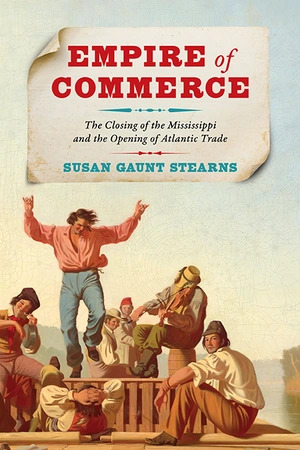Constitutionalism Encounters Economic Realpolitik
Stearns’s account of the politics and legal dynamics surrounding this period of economic change ends with the Louisiana Purchase. Having reacquired the Louisiana territories from Spain via the third Treaty of Ildefonso in 1800, Napoleon’s France was in a position to undo all that America had achieved in the area of the Mississippi trade since 1795. Should the French Republic decide to block commerce on the Mississippi, issues viewed as long settled might be put back in question.
It was fortunate for President Thomas Jefferson, Stearns observes, that the Westerners were Democratic-Republicans and that “support for Jefferson was nearly absolute.” This disposed Westerners to wait for the federal government to act. But Stearns underscores that the preceding eight years of stable commerce and growing Western integration into America’s eastern markets had established a commonality of interests and sentiments between Westerners and the rest of the United States. Thus, Stearns emphasizes, obstruction of the Mississippi trade “was no longer a ‘western’ problem.” All Americans now saw themselves as having a stake in it.
Yet such oneness of mind did not provide immediate guidance about what the United States should do about this sudden reinsertion of French sovereignty into the North American continent. Since 1792, the United States had tried to avoid taking sides in Britain and Revolutionary France’s increasingly global struggle. Absent, however, some type of settlement with France concerning the Mississippi trade, America might have to resort to force. That would have necessitated a US alliance with Britain. Though this might have secured the Mississippi trade for America, exiting a war is never as easy as entering it.
In a way, Napoleon’s realization that defending Louisiana was beyond France’s military and naval capacities saved America from having to take such action. Perhaps the greatest irony of Napoleon’s decision to sell 828,000 square miles of French territory to the United States—effectively doubling the size of the country—was the bind in which the Louisiana Purchase placed that strictest of constitutionalists, Thomas Jefferson.
It took a mere three weeks, Stearns writes, “to resolve a problem the nation had confronted for the previous two decades and to transfer millions of acres and tens of thousands of people to nominal US sovereignty” through a deal financed, paradoxically enough, by a British bank. Nonetheless, Stearns comments, Jefferson well knew that “nowhere in the Constitution was he given the power to purchase land.” A constitutional amendment was one way of resolving the legal problem, but the five state legislatures then controlled by Federalists were unlikely to ratify it.
